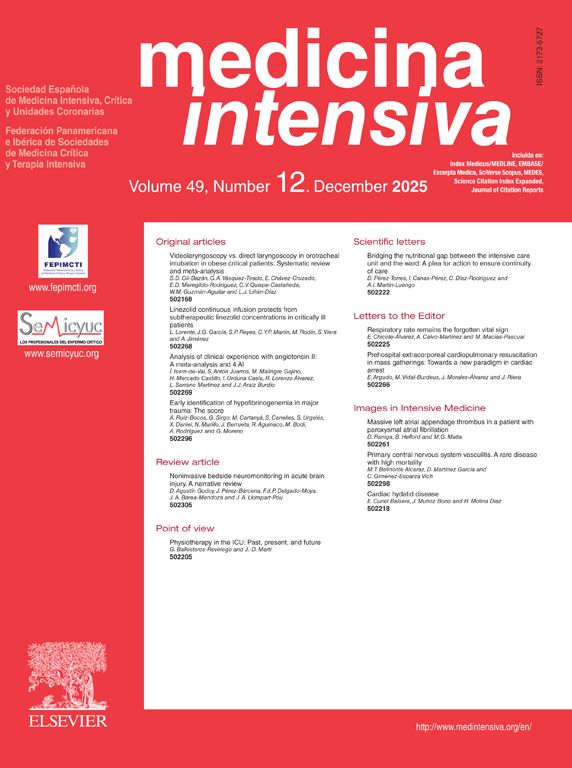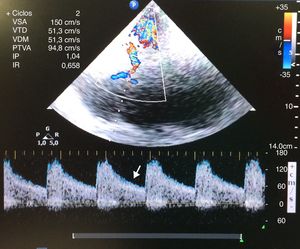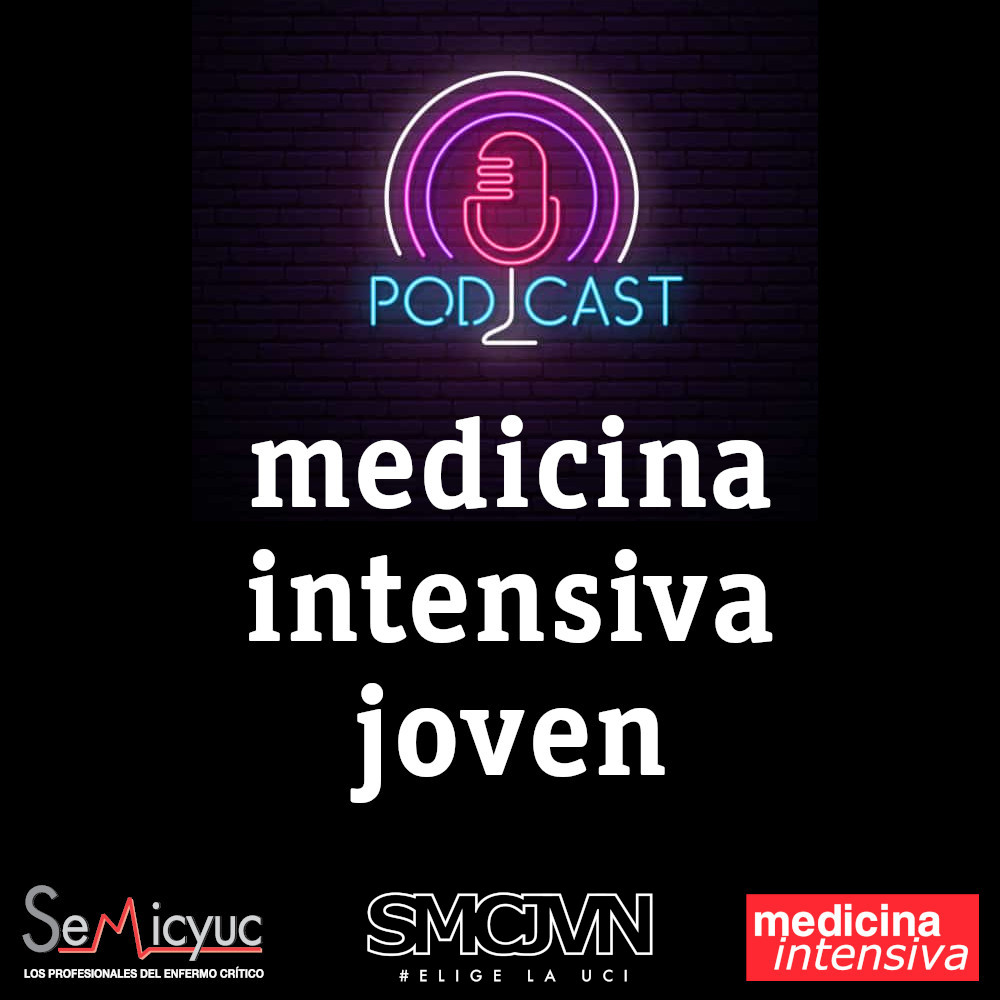Mujer de 43 años con cefalea brusca. La TC demuestra hemorragia parieto-occipital izquierda sobre lesión subyacente con herniación parcial. La escala de coma de Glasgow (GCS) 15 hasta el 4.° día, en el que presenta anisocoria derecha y GCS 3. Se inicia osmoterapia, sedación, VM, hiperventilación y catéter en subclavia derecha, resolviéndose la anisocoria y siendo el valor de BIS 40 (se descarta resangrado en la TC). A los pocos minutos se implanta sensor de PIC (65mmHg), BIS cae a 0 y el Doppler transcraneal objetiva flujo sistólico con ausencia de onda diastólica (fig. 1), que no revierten con medidas de 1.° nivel. Descartadas otras etiologías de hiperPIC, se realiza Rx de tórax de control de vía, aún pendiente, objetivándose neumotórax (NT) derecho iatrogénico a tensión. Tras drenar NT, se normalizan pupilas, velocidades de la ACM (fig. 2), BIS y PIC.
The Impact Factor measures the average number of citations received in a particular year by papers published in the journal during the two preceding years.
© Clarivate Analytics, Journal Citation Reports 2025
SRJ is a prestige metric based on the idea that not all citations are the same. SJR uses a similar algorithm as the Google page rank; it provides a quantitative and qualitative measure of the journal's impact.
See moreSNIP measures contextual citation impact by wighting citations based on the total number of citations in a subject field.
See more







